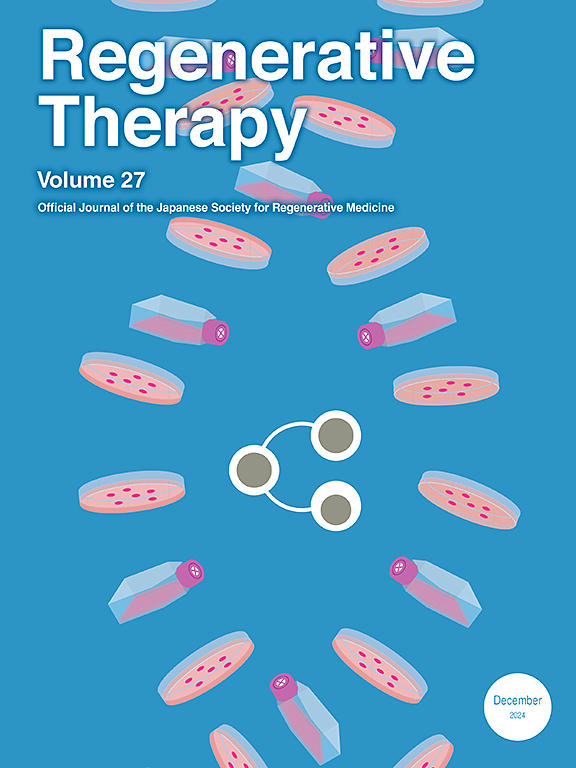Vitamin A-loaded decellularized kidney capsule promoted wound healing in rat
IF 3.4
3区 环境科学与生态学
Q3 CELL & TISSUE ENGINEERING
引用次数: 0
Abstract
Tissue regeneration in many skin defects is progressing with new treatments in recent years. Tissue engineering with the use of scaffolds offers more versatile and faster solutions in treatment. Extracellular matrix (ECM) and its three-dimensional (3D) network structure as a biological bond by imitating the tissue microstructure has been used for tissue repair, which can answer many existing challenges. Vitamin A, which comes in several forms such as retinols, retinals, and retinoic acids, is a necessary vitamin that is crucial for wound healing. In this research, sheep kidney capsule tissue decellularized with sodium dodecyl sulfate (SDS) containing different doses of vitamin A has been used as an ECM in skin tissue engineering. The above scaffold was evaluated in terms of properties such as biocompatibility, analysis of mechanical properties, attenuated total reflection Fourier transform infrared spectroscopy (ATR-FTIR), hydrophilicity, antibacterial, and cell adhesion. The findings reported suitable properties for wound dressing, especially at a dose of 15,000 U/ml vitamin A for this scaffold. Then, the above scaffold was evaluated on the full-thickness wound model in rat, which showed good wound contraction, and increased VEGF factor. It showed a decrease in IL-1β level. Therefore, the use of the above-mentioned decellularized scaffold in combination with medicinal agents effective in wound healing can be introduced for further pre-clinical studies.
含维生素 A 的脱细胞肾胶囊促进大鼠伤口愈合
近年来,针对许多皮肤缺损的组织再生新疗法正在取得进展。使用支架的组织工程学为治疗提供了更多样、更快速的解决方案。细胞外基质(ECM)及其三维(3D)网络结构作为一种生物粘合剂,通过模仿组织的微观结构,已被用于组织修复,这可以应对许多现有的挑战。维生素 A 有多种形式,如视黄醇、视黄醛和视黄酸,是伤口愈合所必需的维生素。在这项研究中,用含有不同剂量维生素 A 的十二烷基硫酸钠(SDS)脱细胞的绵羊肾囊组织被用作皮肤组织工程的 ECM。对上述支架的生物相容性、机械性能分析、衰减全反射傅立叶变换红外光谱(ATR-FTIR)、亲水性、抗菌性和细胞粘附性等性能进行了评估。研究结果表明,该支架具有适合伤口敷料的特性,尤其是在维生素 A 剂量为 15,000 U/ml 时。然后,上述支架在大鼠全厚伤口模型上进行了评估,结果显示伤口收缩良好,血管内皮生长因子因子增加。IL-1β水平有所下降。因此,可将上述脱细胞支架与对伤口愈合有效的药物结合使用,进行进一步的临床前研究。
本文章由计算机程序翻译,如有差异,请以英文原文为准。
求助全文
约1分钟内获得全文
求助全文
来源期刊

Regenerative Therapy
Engineering-Biomedical Engineering
CiteScore
6.00
自引率
2.30%
发文量
106
审稿时长
49 days
期刊介绍:
Regenerative Therapy is the official peer-reviewed online journal of the Japanese Society for Regenerative Medicine.
Regenerative Therapy is a multidisciplinary journal that publishes original articles and reviews of basic research, clinical translation, industrial development, and regulatory issues focusing on stem cell biology, tissue engineering, and regenerative medicine.
 求助内容:
求助内容: 应助结果提醒方式:
应助结果提醒方式:


